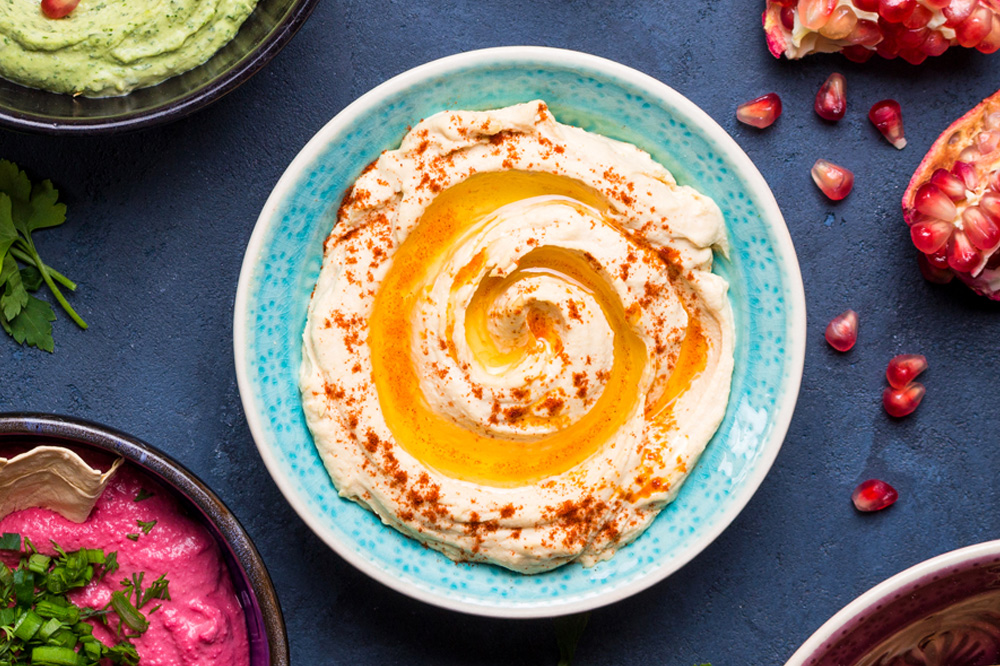
It’s no wonder Ben Lang decided to declare May 13 International Hummus Day seven years ago. The creamy Levantine and Egyptian food dip is now a favourite throughout the globe. As well as being part of the nutritious and healthy Mediterranean diet, it is utterly delish and extremely versatile. What’s more, it’s vegan and allergy-friendly as it’s free of gluten, nuts and dairy.
Whether you choose to dip, spread or explore with hummus for breakfast, lunch or dinner, here are some of best reasons to head to the kitchen pronto and then Tweet/Instagram your creation using the hashtag #hummusday.
1. A great source of protein
Chickpeas, the base of most hummus recipes, are a first-rate source of plant-based protein. Protein is an essential building block in bone, muscle, skin and blood health, and hummus is a great option for people who can’t get that from meat, like vegans and vegetarians. Plus, when chickpeas are mixed with tahini, a great source of important amino acids made from ground sesame seeds, or whole grains, a ‘complete protein’ is created, giving you all nine of the essential amino acids your body needs.

2. Helps weight control
Proteins can also help make you feel full. The feeling of satiety can help fight hunger cravings, making you less likely to snack between meals. Plus, the iron content in hummus provides the kind of energy boost that can propel you to hit the gym or try that trampoline class you’ve heard about. Additionally, tahini contains a fair amount of monounsaturated fats, which have the power to help promote weight loss and trim down those love handles. Monounsaturated fats are always preferable to trans fats and polyunsaturated fats, which can cause weight gain and an increase in belly fat. The high fibre content in chickpeas also helps people avoid overeating.
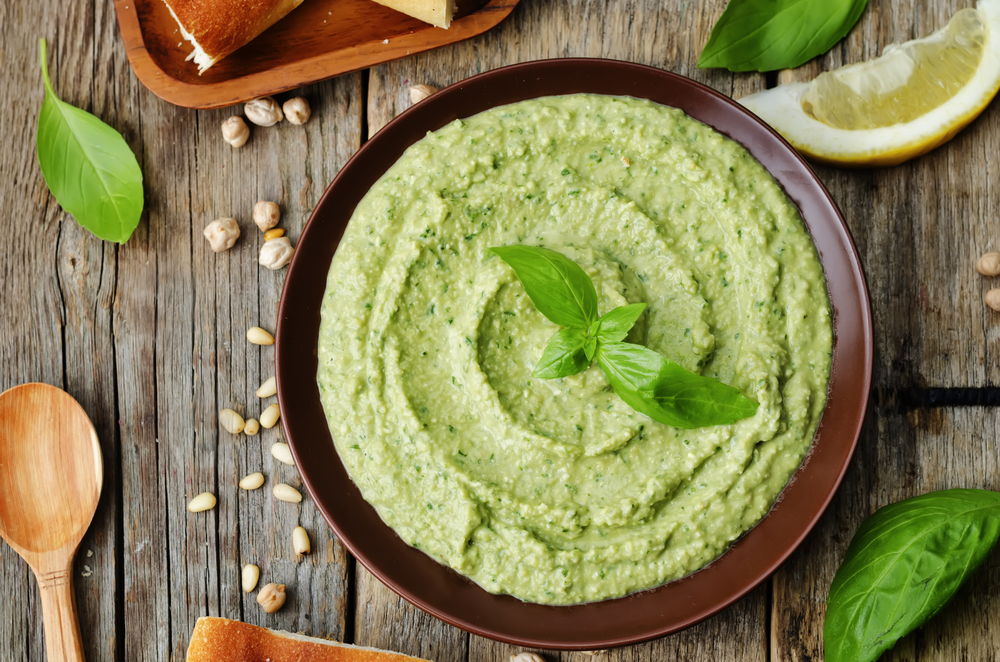
3. Lowers cholesterol levels
Beans in general, and chickpeas in particular, have nutrients in them that can help keep cholesterol levels in check. Jane Pittaway, an Australian lecturer in Health and Biomedical Science at a Tasmanian university, got a group of not so healthy 30 to 70-year-olds to eat chickpeas every day for three years. Her study also involved another group eating wheat products like bread and cereal. The results showed that when both groups consumed the same amount of fibre, the people on the chickpea diet consumed less fat and had a slight reduction in cholesterol.
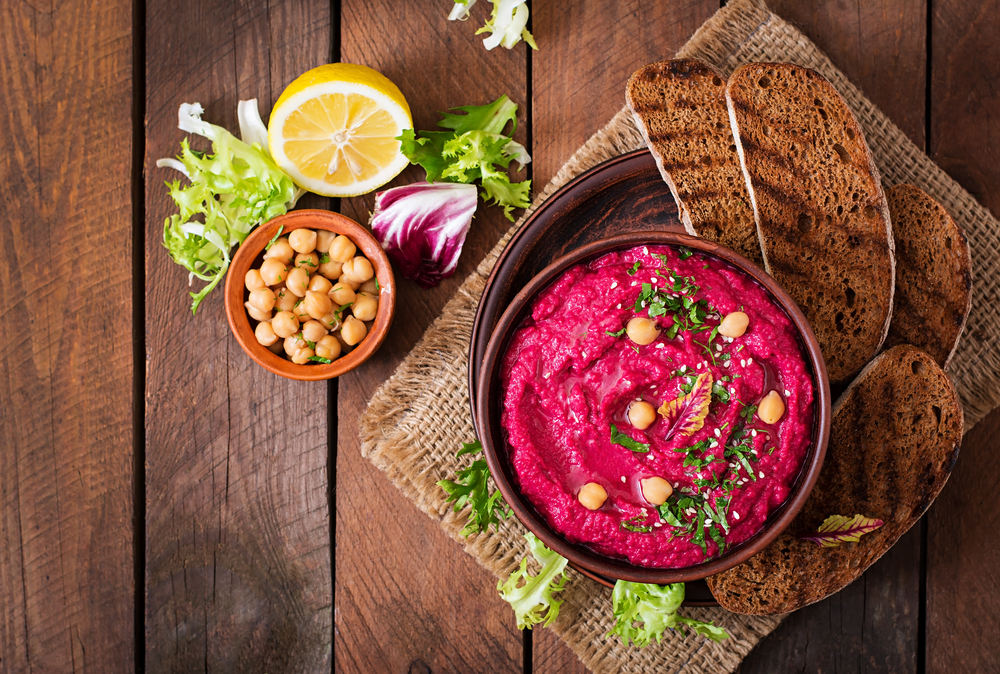
4. Protects against heart disease
Hummus is commonly eaten in many Mediterranean nations and some of these, like Greece and Turkey, have low rates of cardiovascular disease. Beans have been shown to help reduce hypertension and protect against heart disease. They help keep the arteries clear from plaque buildup, decreasing the chances of cardiac arrest and stroke. Actually, studies show that one daily serving (about 3/4 cup when cooked) of any kind of beans can help to reduce chances of a heart attack.
5. Guards against cancer
Chickpeas provide protective properties against cancer, in particular colon cancer. Tests have shown three compounds in beans, saponins, protease inhibitors and phytic acid, help guard cells from the damage that can cause cancer. Chickpeas can keep the digestive system, including the colon, free from harmful bacteria and toxic buildup as the fibre they contain can help keep waste exiting the body quickly.
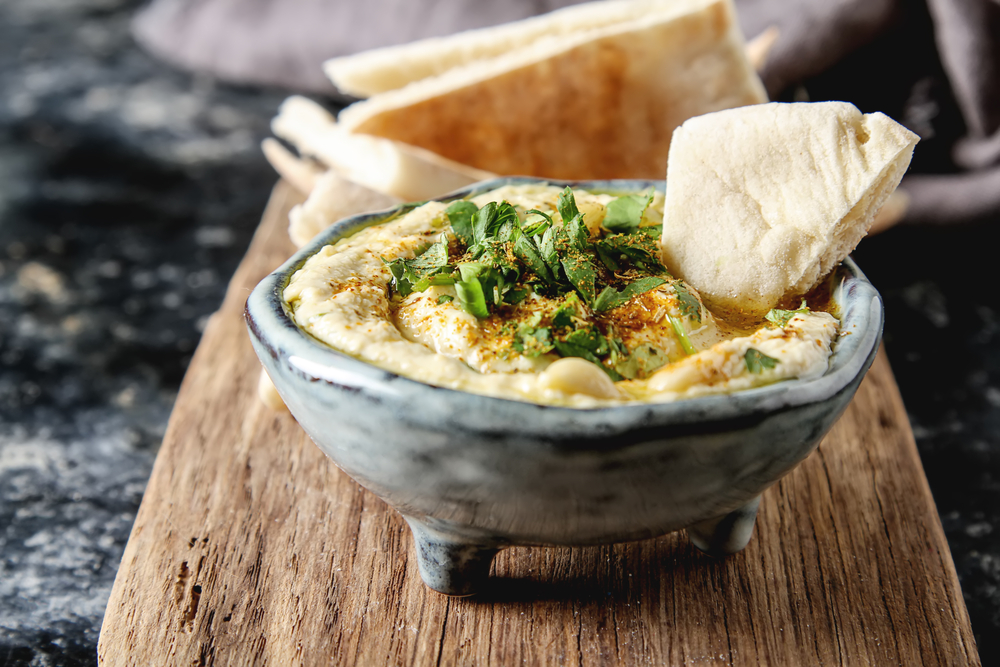
6. Fights inflammation
Hummus includes garlic, olive oil and chickpeas, which are all anti-inflammatory foods. A Korean study proved garlic reduced inflammation, research by the “British Journal of Nutrition “concluded olive oil can ease inflammation, while an investigation out of Pakistan’s University of Karachi highlighted how two different varieties of chickpeas actively reduced inflammation. All of this is important because when there’s a high level of inflammation, the body’s natural defense to move toxins out of the body, it’s a sign your body has been overwhelmed by food, environmental or medicinal toxins. Foods that help trim down inflammation also assist in reducing the possibility of arthritis and disease.
7. Rich in fibre
Chickpeas are an amazing source of fibre, which is good for our health in many ways, As well as helping us nurture a healthy digestive system, the legume improves cardiovascular health and makes us feel full, as noted before, helping decrease obesity-related diseases like type 2 diabetes. We’ve also already touched on how dietary fibre can be protective against cancer as it can help promote the growth of healthy bacteria in the colon.
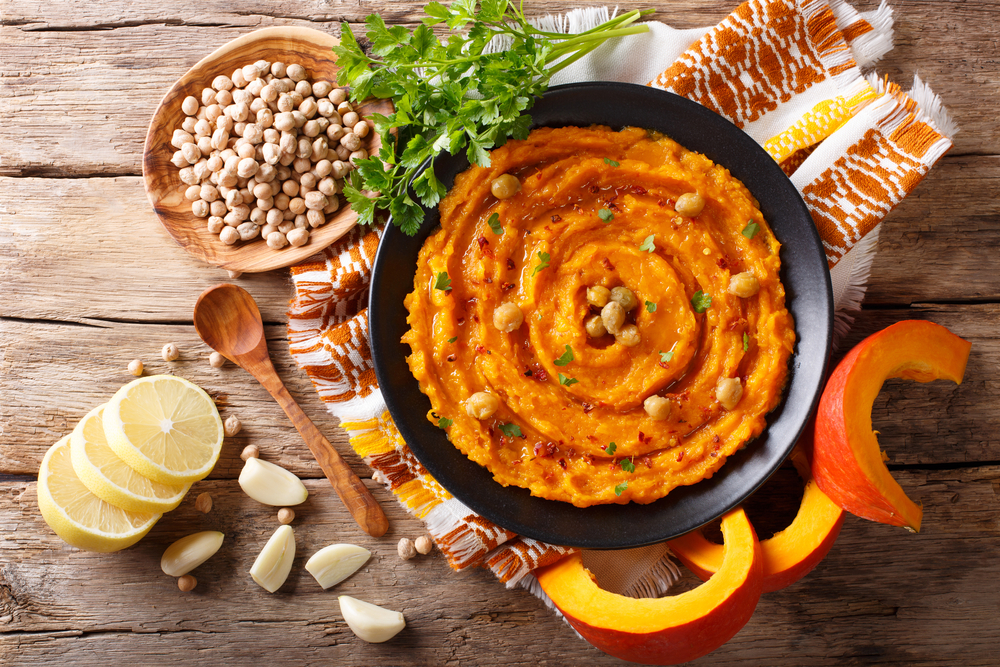
8. Loaded in vitamins
A serving of hummus provides 25 micrograms of the water-soluble B vitamin folate, which is essential for producing new cells, including red blood cells and DNA. The delicious dip contains small amounts of thiamine, vitamin A, vitamin B-6 riboflavin and niacin as well.
9. High iron content
Chickpeas, also known as garbanzo beans, are no couch potatoes when it comes to iron content, with ½ cup providing 30 percent of your daily iron requirement. We need iron to help deliver oxygen to red blood cells. It also helps proper metabolism that feeds our muscles and other organs. Iron deficiency and anaemia can cause a slump in energy and cognitive function and depress the immune system. Tahini is also rich in iron.
10. Loaded with antioxidants
We’ve all heard how good antioxidants are good for our overall health, and chickpeas have a lot of them. Getting plenty of antioxidants, the man-made or natural substances that may prevent or delay some types of cell damage, helps reduce the oxidant damage caused by free radicals by neutralising them.
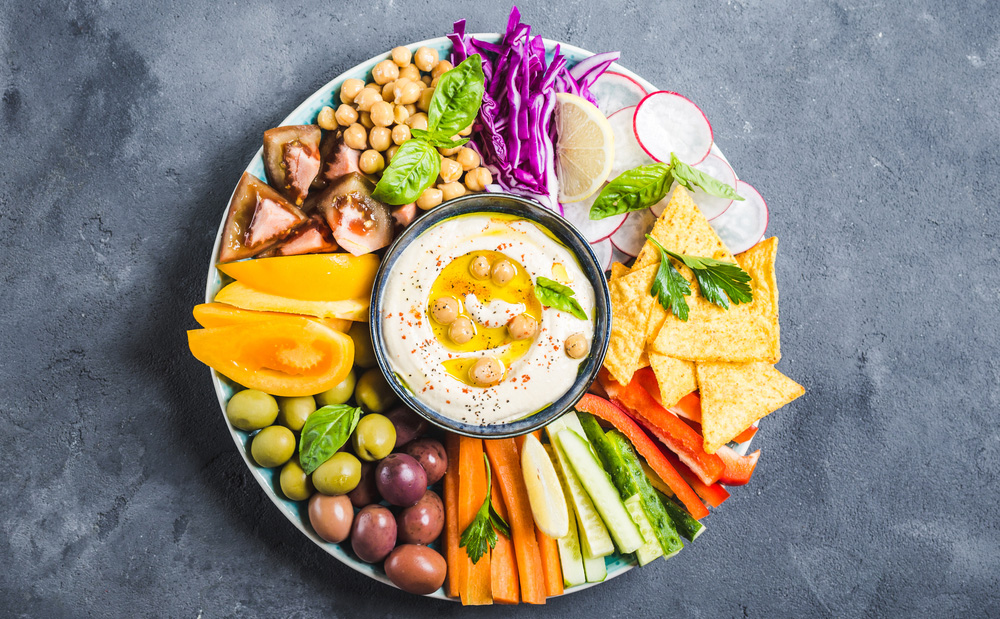
11. A sea of minerals
Two tablespoons of hummus will also increase your mineral intake, providing 53 milligrams of phosphorus and 21 milligrams of magnesium. Additionally, It will offer small amounts of potassium, calcium and zinc. Phosphorus plays a role in kidney, heart, muscle and nerve function, while magnesium is necessary for immune function and keeping your blood sugar and blood pressure at healthy levels.
Getting Creative with Some Homemade Happiness
While it’s tempting to buy ready made hummus from the super market, you’ll be surprised at how easy it is to whip up at home. All you need to do is place a can of chickpeas, one or two cloves of garlic, two tablespoons of extra virgin olive oil, the juice of half a lemon, ¼ cup tahini (sesame seed butter) and salt in a food processor, whirl until all smoothly blended and voila! As well as controlling ingredients like salt, you’ll know exactly what’s in your hummus.
It’s mouthwatering as it is, but another reason to love hummus is how adaptable it is. Whether you want to add a pop of colour for pretty presentation or get your kids to eat fruits and vegetables without noticing, you can experiment with hummus to your heart’s content. Adding ingredients like avocado, beetroot, chipotle black bean, roasted red pepper, sweet potato, spiced carrot, roasted squash or Kamalata olives can make the go-to dip even more nutritious and insert some exciting variety. You can also throw in numerous herbs and spices. To make hummus even healthier, you can serve it with carrot spears, red pepper wedges or cucumber slices and avoid bread or crackers.
Did You Know?
- The nutrient-dense dip hummus is an ancient food, connected to famous historical figures like Saladin. According to some ancient scriptures, it was first consumed in Egypt around the 13th Century. However, tahini was never used in the recipe back then.
- Lebanon set a record for the biggest plate of hummus, which weighed an incredible 10,452 kg. Chef Ramzi Choueiri and student chefs from Al-Kafaat University cooked up the Guiness World Record in May, 2010.
















